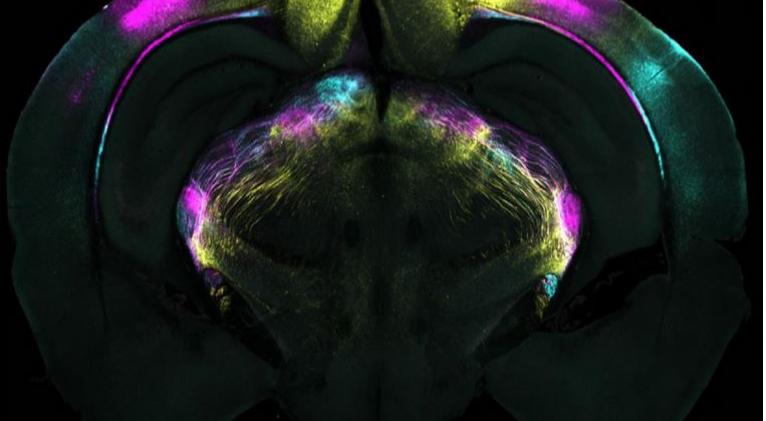
United Kingdom, Feb 7. - A team of scientists has discovered the brain mechanisms that allow animals to suppress instinctive fear responses, a finding that could help develop therapies to treat post-traumatic stress disorder (PTSD) and anxiety.
The details of the study, carried out by researchers at the Sainsbury Wellcome Centre (SWC) at University College London, were published this Thursday in the journal Science.
"Humans are born with instinctive fear reactions, for example to loud noises or rapidly approaching objects," explains Sara Mederos, researcher at the SWC and co-author of the study.
"However, we can override these instinctive responses through experience, such as when children learn to enjoy fireworks instead of fearing their roar. We wanted to understand the brain mechanisms underlying these forms of learning."
To study how the brain learns to suppress responses to perceived threats, the team studied mice presented with an expanding shadow that mimicked an approaching aerial predator.
Initially, the mice sought refuge from this visual threat, but after several exposures and no real danger, they learned to remain calm rather than escape, providing the researchers with a model to study the suppression of fear responses.
From previous studies, they knew that an area of ??the brain called the ventrolateral geniculate nucleus (vLGN) could suppress fear reactions when it was active and track knowledge of previous threat experiences.
The vLGN also receives information from visual areas of the cerebral cortex, so the researchers studied whether this neural pathway played a role in learning not to fear a visual threat.
The study discovered two key points in this learning process: that specific regions of the visual cortex are essential for the learning process, and that the vLGN stores these learning-induced memories.
"We found that animals did not learn to suppress their fear responses when specific visual cortical areas were inactivated. However, once the animals had already learned to stop escaping, the cerebral cortex was no longer needed," explained Mederos.
"Our results challenge traditional ideas about learning and memory," says Professor Hofer, lead author of the study.
In addition, the researchers also discovered the cellular and molecular mechanisms underlying this process.
Learning occurs through an increase in neuronal activity in certain neurons of the vLGN, triggered by the release of endocannabinoids, internal messenger molecules of the brain known to regulate mood and memory.
This release decreases the inhibitory input to vLGN neurons, leading to greater activity in this area of the brain when the visual threat stimulus is encountered, which suppresses fear responses.
The authors suggest that the implications of this discovery go beyond the laboratory.
"Our findings could help to better understand what goes wrong in the brain when fear response regulation is altered in diseases such as phobias, anxiety and PTSD. Although instinctive fear reactions to predators may be less relevant to modern humans, the brain pathway we have discovered also exists in humans," says Hofer.
"This could open up new avenues for treating fear disorders by acting on vLGN circuits or localized endocannabinoids systems."
The team now plans to collaborate with clinical researchers to study these brain circuits in humans, with the hope of one day developing new, specific treatments for maladaptive fear responses and anxiety disorders. (Text and Photo: Cubasí)